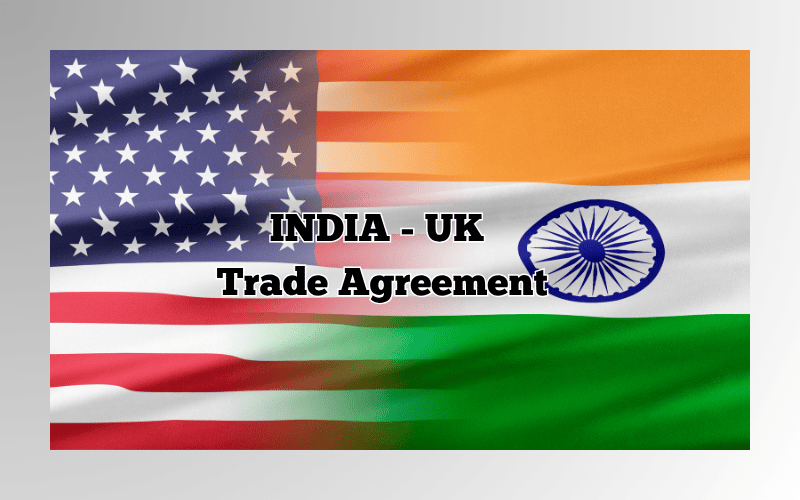Negotiations for the India-UK FTA, completed since May 2025, have made a major impact on the relationship between the two countries. Moving forward, it is hoped that tariffs on goods and services, mainly in the auto sector, will be lowered, building on trade growth. Import duties on luxury cars from the UK have been cut significantly ways which may transform the Indian automobile industry.
Overview of the India-UK FTA
The agreement creates opportunities for growth by removing or reducing many product tariffs. The UK government reports that as part of the deal, India will reduce its tariffs on whisky, cosmetics, and medical devices and cut duties on 90% of what the UK trades with India. With a quota system, automotive tariffs will fall from a high of over 100% down to 10%.
Impact on British Luxury Car Imports
After the FTA came into effect, the amount of tax involved in importing premium UK-made cars fell profoundly, from above 100% to just 10%. Because of this change, owning a luxury car in India is becoming less expensive. Benefits from this new development are likely to occur for firms such as Jaguar Land Rover (JLR), Aston Martin, Bentley, and Rolls-Royce.
Strategic Focus on Premium Vehicles
High-end vehicles are the only ones to benefit from the duty concessions, since this benefits a limited group. As a result, this helps reduce risks to the general automotive sector and keeps foreign competitors from challenging domestic industry giants in the mass market.
Exclusion of Electric Vehicles (EVs) from Concessions
Its key point is that the FTA does not change present protections for electric cars. Because India wants to support its new EV industry and boost domestic production in it, its budget does not cut import duty on EVs.
Potential Benefits for British Manufacturers
Opportunities to access the Indian market will benefit British auto companies. For example, Jaguar Land Rover sees the FTA as allowing it to extend its India business and increase its sales by twice what they are today over the next several years.
Safeguards for the Domestic Industry
Both the phased start to foreign brands and the imposed quotas are meant to help Indian automakers. The FTA is trying to ensure that liberalizing trade through premium imports doesn’t harm the country’s local manufacturers by excluding EVs from concessions.
Enhanced Opportunities for Auto Component Trade
Apart from full vehicles, the FTA is set to energize the country’s auto component industry too. In 2024, India traded about ₹1,590 crore in auto parts with the UK, exporting more than it imported value of ₹1,150 crore. It is expected to bring about a higher level of technology partnerships and larger market access in this field.
Broader Economic and Strategic Implications
The FTA will contribute to a target to double the amount of trade between India and the UK to $120 billion by 2030. The arrangement, which lowers tariffs on most trade, will strengthen the relationship between the nations, stimulate progress, and create more work for people in each.
Concerns and Challenges
Although the FTA opens up new possibilities for India’s auto industry, it worries some manufacturers. Some worried that, because of the relaxed tariffs under the deal, Indian companies importing from the UK might bring in Chinese products. As a result, Indian component makers might have a tougher time staying competitive in their market.
How the India-UK FTA Could Redefine Automotive Competition in India
Because the India-UK Free Trade Agreement (FTA) will bring import duties on British luxury cars from approximately 100% down to only 10%, India’s automotive industry may change dramatically. For luxury cars and the British automobile sector, this outcome is great, but it brings challenges to Indian OEMs and average market carmakers.
Now that there will be more opportunities for British brands in India, Jaguar Land Rover (JLR) can try to push back against Mercedes-Benz, BMW, and Audi. Lower costs of British luxury vehicles can help more people from India’s flourishing upper class buy them, boosting sales and improving how the brand is viewed. Still, this situation worries Indian carmakers as they fear that even a narrow sector of imported vehicles could take away their chances of success.

The Rise of India’s Affluent Consumer Base
A key reason this FTA makes sense is that India is seeing a rapid increase in its HNWIs. The same report by Credit Suisse suggests that India’s millionaire population will grow by 75% between 2022 and 2027. Because they are highly ambitious and aware of what a brand offers, this customer group is an excellent target for international luxury car companies.
Reducing taxes on luxury cars supports the wishes of consumers. Since a ₹2 crore Mercedes-Benz S-Class can be matched by a captivating Jaguar or Bentley, buyers’ preferences might evolve. More and more, these brands are developing innovative hybrid and sustainable offerings, making their luxury cars popular among environmentally aware buyers.
FTA as a Diplomatic Tool: Soft Power on Four Wheels
The FTA is useful for extending soft power and carrying out diplomacy, apart from economics. As part of its post-Brexit priorities, the United Kingdom wishes to strengthen trade, and India is a huge growth opportunity. Because British automotive companies have an advantage in India, the UK wins better trade and closer political ties.
The nation’s participation in such tactics reflects India’s determination to engage in worldwide trade and be a developed society by 204,7, when it will be 100 years old. In addition, FTAs provide useful frameworks for new negotiations with the European Union, Australia, or ASEAN countries.
Navigating the Make in India Vision
A main task for the FTA is steering its accomplishments in a way that matches India’s “Make in India” and “Atmanirbhar Bharat” vision. The agreement helps boost trade and changes in foreign investment. Besides, it should not get in the way of India’s objectives to be a leading global manufacturing hub, mainly for cars.
To move forward, it might help if more British companies build up their local manufacturing in India. Some Jaguar Land Rover models are already put together in the UK by Tata Motors. An expansion of joint ventures or partnerships for local assembly in India may help Indian companies save jobs and British brands achieve both lower expenses and quicker time to launch.
As India tries to switch to EVs, shared transit, and smart cars, the FTA helps move the automotive sector toward technological innovation. It’s worth noting that EVs are not covered by the tariff reductions in this FTA, something that helps protect the local EV industry. Since Ola Electric, Tata Motors, and Mahindra are increasing their production of EVs, Indian startups and conglomerates can spend more time ON honing their technology.
As British luxury brands bring EV models to India, once both aspects are in place, they may try to change the FTA nonetheless. At this point, Indian policymakers should consider new policies to compete against other countries in EV manufacturing.
Employment and Skill Development: The Hidden Impact of the FTA
The FTA is having a strong, albeit quiet, impact on the employment and skill development of employees in the automotive sector. By direct and indirect employment, the Indian auto industry supports more than 37 million staff members, which is significant for India. Rising competition from British cars could create short-term job risks for Indian car makers, mainly in the luxury segment, due to squeezed margins and a loss of demand.
It is possible to use this problem as an opportunity. If you produce more locally using the CKD (Completely Knocked Down) method, it will help create more jobs in high-value manufacturing, accurate engineering, a nd support services. What’s more, these kinds of partnerships can improve the abilities of Indian workers while introducing them to new technologies in the automotive sector.
SIAM and ACMA, along with India’s policy think tanks, could partner with organizations in the UK to launch sail exchange programs, apprenticeships, and areas focused on training in EVs, hybrid systems, and autonomy.
Changing Consumer Mindsets and the Rise of Global Choices
Because incomes are rising, Indians are exposed to international cultures online and in real life, which is making them more global in their desires. The mindset shift will probably move forward because of the FTA. People now see luxury cars as reflecting who they are, what their values are, and the way they choose to live.
Low-tariff conditions mean British cars can be a good choice, positioned between leading German brands and less costly brands, if they offer outstanding looks, fantastic performance, and environmentally friendly features. Thanks to this FTA, there are new opportunities to shape the way people trade, increase consumer choice, encourage local brands to be creative, and shape the future of mobility worldwide.
Conclusion
The agreement between India and the United Kingdom in automotive trade signals a major change in their relations. Even as local luxury brands can reach more places in India, the regulations and rules keep the spotlight on protecting local industries. Upon the agreement being effective, all those involved in the automotive sector will have to react to the new situation, considering both new openings and their strategies.














